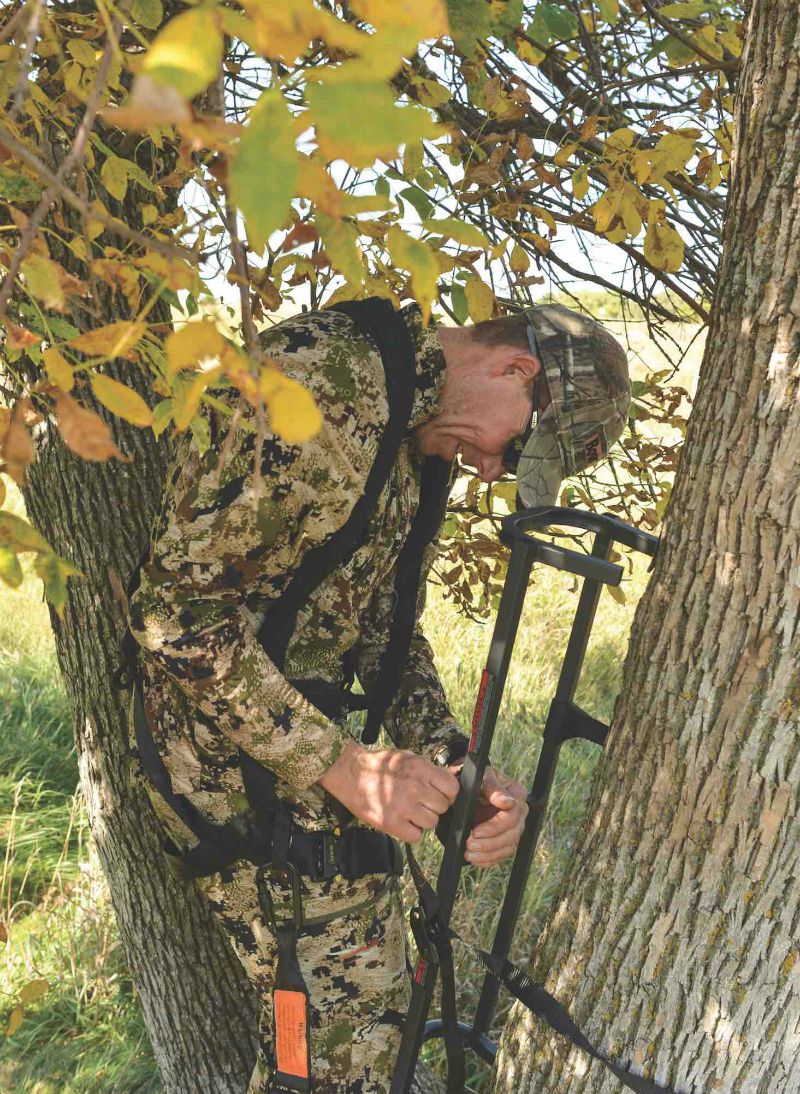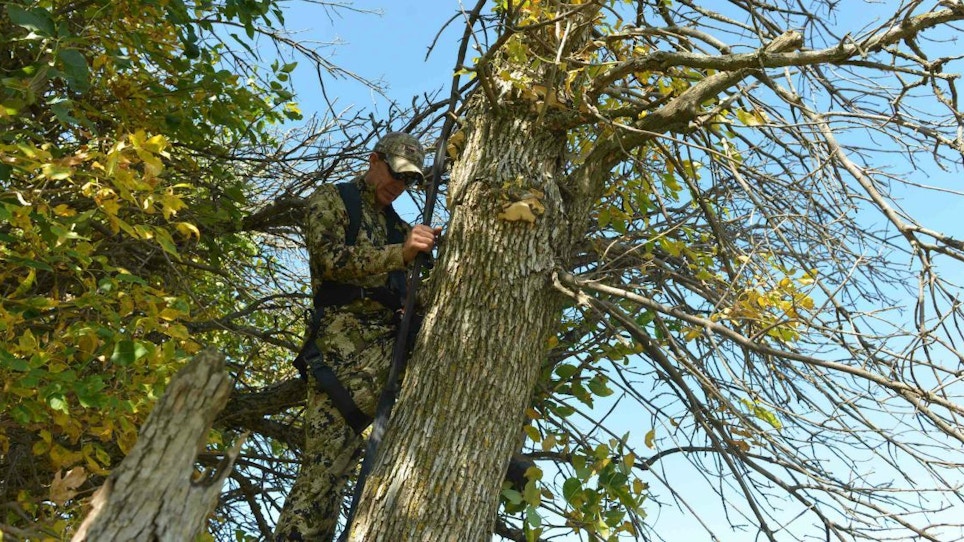Great whitetail spots rarely come with perfect, straight-trunked trees in which to place a treestand. It’s a headache deer hunters deal with every year. Some turn to ground blinds in order to hunt high-traffic areas, but others move on looking for the next-best-thing that features a suitable stand tree.
A better bet is to exhaust all stand-tree options. If you’re willing to use a lightweight hang-on and climbing sticks, you might be able to make a doubtful tree work. This isn’t as much of an issue in deciduous forests with plenty of old-growth trees, but for western whitetail hunters or north-country swamp hunters, it is. Ditto for bowhunters who ply their deer trade in the lightly forested fencelines and sloughs of the many flyover states that are chock-full of big bucks.
 Sometimes Smaller is Better
Sometimes Smaller is Better
Most stands can be set in trees that are fairly small in diameter provided you’re mindful of safety, and while you might not have as much cover to hide your silhouette, you may need to hunt the stand only once. When dealing with an undersized tree, position yourself so that you’re facing away from where the deer will most likely approach so that you can take advantage of what little cover is available. In other words, use your stand tree as blocking cover when it’s time to draw your bow.
Other tough-to-work-with trees include those that are covered in branches, thorns or knobs that will dig into your back and make the whole process of hanging — and sitting — not overly enjoyable. Again, you might have to hunt the spot only once, so you may just have to suck it up and make it work.
As for those trees that are way less-than-straight, a small lock-on such as the Millennium M7 Microlite (www.millenniumstands.com) that has a lesser-sized platform measuring 20.5 inches by 26 inches is ideal. These smaller-sized stands can be crammed into tight places.
A good saw and a little patience can go a long way toward making those trees work. In this case, and those where you’re dealing with trees that were saplings only a few years ago, the goal is to hide as effectively as possible. This fall, make an effort to bowhunt a place that’s too good to pass up.
Editor’s bonus tip: If you have a stand tree that is simply too crooked for a standard hang-on treestand, then it’s time to consider purchasing a portable that’s designed specifically for those less-than-perfect trees. Check out the video below to see the benefits of a Twisted Timber Treestand.






